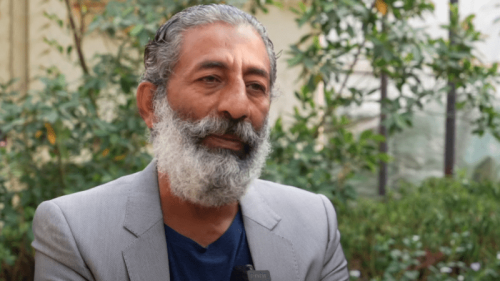
THE agriculture sector, with around 80pc contribution to the national export base, is the mainstay of Pakistan’s exports.
Out of nearly $19.2bn export proceeds from agro-based products, 28pc are from primary commodities like rice, fish, meat, fruits, vegetables and raw cotton, 22pc from intermediate products — yarn, fabric and molasses — and the remaining 50pc from value added products: knitted and woven garments, made-up textiles and leather products.
The current edifice of Pakistan’s agro-based exports is anchored on cotton, rice, horticulture and livestock with intermittent exports of sugar and wheat. The production of all these commodities is inward looking rather than export-led — exporting the surplus left from domestic consumption instead of producing what the market demands.
Optimising the potential of the agriculture sector is contingent upon a paradigm shift from supply-led production to demand-driven high value agriculture
Cotton provides the raw material base for the textile sector, whose share in national exports has regressively increased from 56pc to 60pc during the last two years. Despite being the 4th largest producer of cotton, Pakistan relies on imported long staple cotton for producing better quality fabrics for the export market and specialised products for the domestic market.
With 57pc of production shipped abroad, rice is the only crop ‘grown-for-export’. However, being water intensive in ever-increasing water scarcity, it faces an existential threat in the cropping scheme; the substitution of rice with water-efficient crops would be ultimately inevitable unless drought-tolerant varieties are expeditiously developed. An alternative means of earning $2bn forex will have to be explored — the sooner, the better!
The exports of wheat and sugar has been erratic and uncompetitive. Surplus stocks accumulated by the provincial governments during the last two years could not be offloaded as the wheat purchased at an unsustainable procurement price can only be offloaded in the international market with a 50pc subsidy — selling at half the cost means assured insolvency.
The sugar economy is significantly lopsided. There is a contrived over-production of sugarcane to ensure capacity utilisation of an over-capacitated industry with excess commodity. The water-intensive crop has been cannibalising the land and water resources of other vital crops, especially cotton. The unwarranted surplus is to be exported at an unsustainably high subsidy.
Production of all the four major crops i.e. cotton, rice, wheat and sugarcane is globally uncompetitive, and domestic-focused rather than export-led. The gradual reduction in farm size over the past few decades has rendered the production of grain crops uneconomic. Small size farms are optimally suited to high-value agricultural (HVA) commodities e.g. horticulture, livestock, meat and poultry which increase farm incomes and have a strong export focus. According to the International Food Policy Research Institute, ‘an important strategy for increasing the incomes of small-scale farmers in developing countries is to help them diversify from low-value staple food commodities into higher-value commodities’.
Currently, Pakistan produces a rich variety of horticulture products but the export basket is quite narrow. The production of ‘international’ fruits i.e. banana, apple, orange, grape, strawberry and cherry is hardly sufficient to meet domestic demand.
Kinnow and mango, cumulatively constitute 50pc of fruit exports, but remain in the category of exotics instead of mainstream fruits. Onion and potato constitute 60pc of vegetables exports but due to a high cost of production become competitive in the international market only when the domestic market crashes; almost all fresh vegetables produced have a less than 20-days shelf life and can’t survive the voyage to premium price markets; air-shipment becomes uncompetitive due to the exorbitant airfreight.
Though livestock constitutes around 59pc of agriculture GDP, its contribution to national export proceeds is merely 5pc. Pakistani meat products are barred entry into the world’s largest meat import market i.e. EU, because of its inability to meet the stringent traceability requirements.
The poultry sector, which has phenomenally grown during the last decade, is currently revelling in the domestic comfort zone with very little motivation to court challenges of the export market.
The production of export-led high value agriculture products is the antidote to the malaise afflicting the agriculture sector. Exports provide significant stimulus to the ex-farm prices of HVA products. The export market is expanding because the consumption of these products is growing rapidly in both developed and developing countries as incomes increase and diets become diverse.
According to the gravity model of trade, perishable products are more amenable to gravitational force of geography and spatiality than non-perishables.
HVA products from Pakistan, therefore, have a significant potential in regional markets especially the Gulf Cooperation Council (GCC) countries. Due to inherent climatic conditions restraining the agricultural production, GCC countries are reliant on food imports and currently have tolerant SPS standards — Pakistan is the backyard farm.
To conclude, HVA products constitute the major part of agriculture exports of the leading agricultural exporting countries — New Zealand 84pc, Philippines 79pc, Indonesia 77pc, Malaysia 71pc, Israel 69pc, Netherlands 61pc, Australia 58pc and India 47pc; in Pakistan it’s merely 32pc.
Optimising the potential of Pakistan’s agriculture sector is contingent upon a paradigm shift from supply-led production of staple food crops to demand-driven high value agriculture through (a) export-focused cultivation of products and varieties, (b) adoption of good agriculture practices, (c) improvement of SPS standards, international certifications and traceability regimes, (d) development of cool chain, (e) value addition, and (f) market development of Pakistani specialty — horticulture products — in the mainstream export market segment.
The author is joint secretary (Exim) Ministry of Commerce.














































Dear visitor, the comments section is undergoing an overhaul and will return soon.